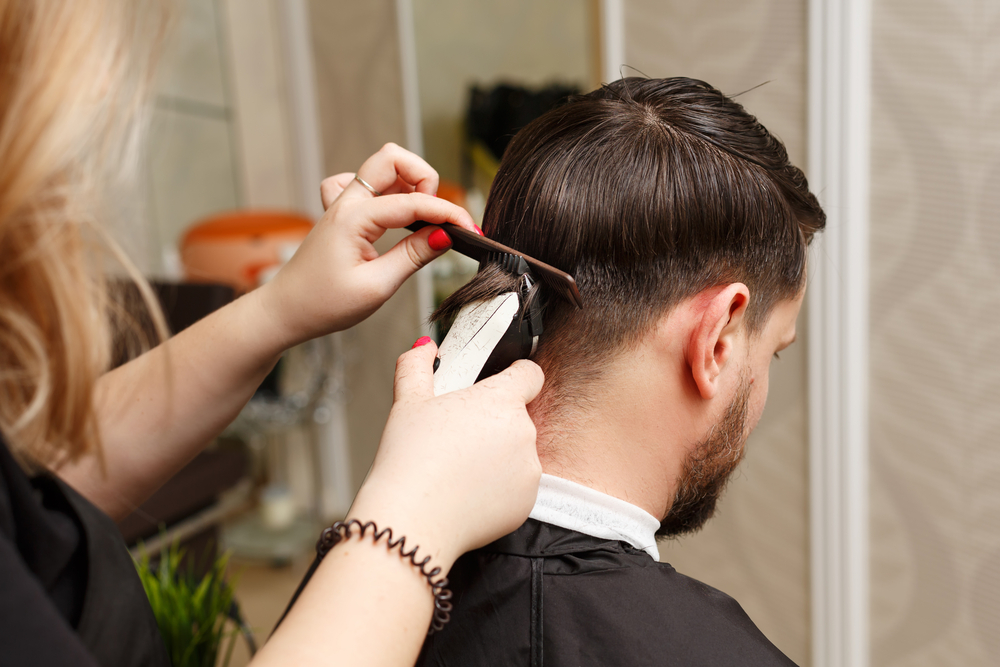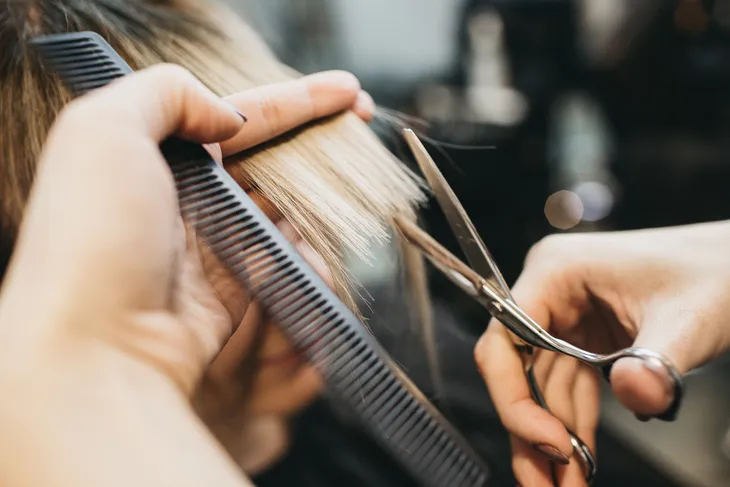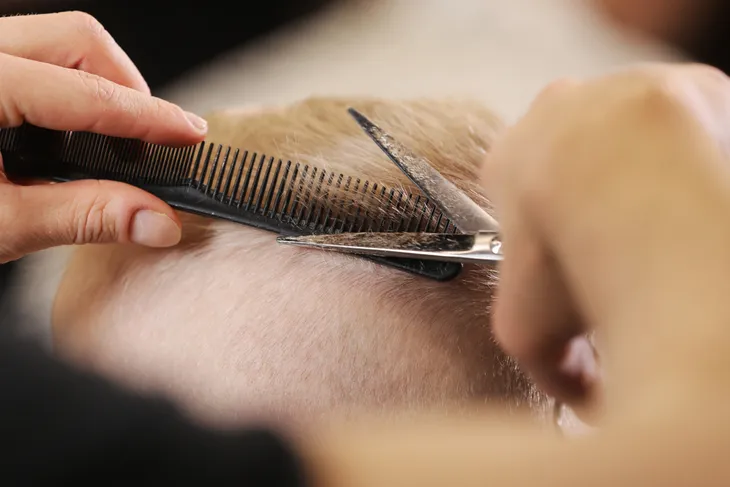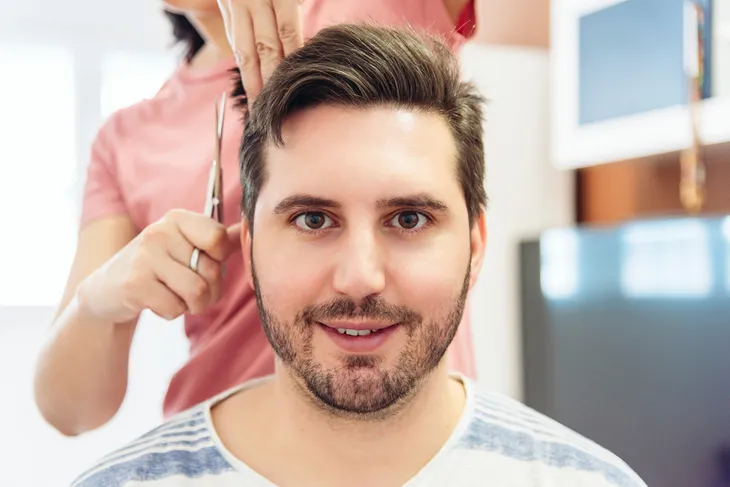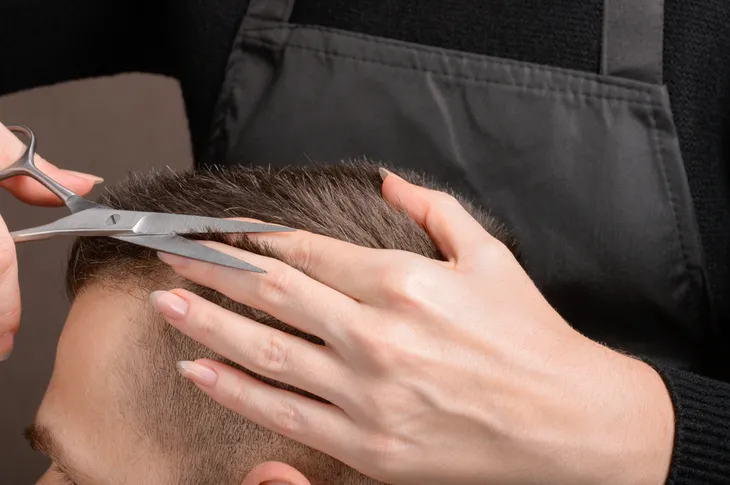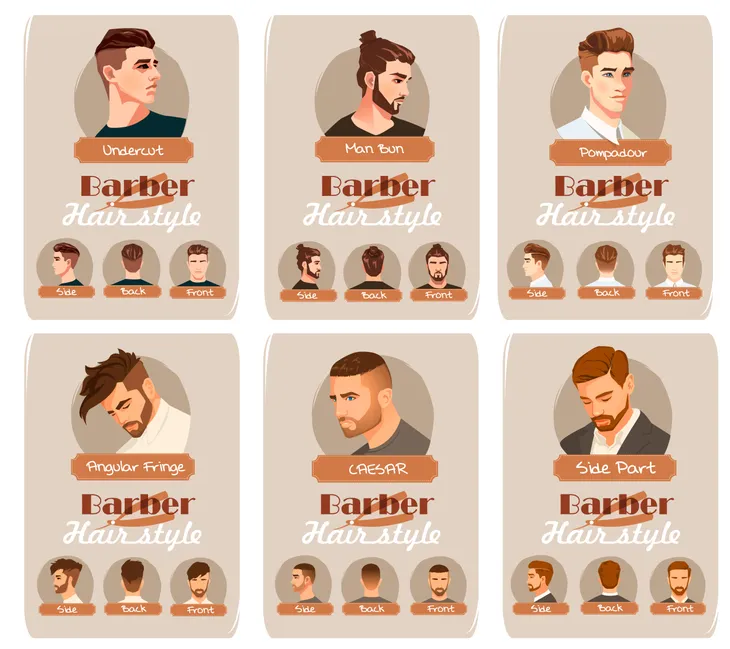Do you have a haircut horror story to share? Who hasn’t returned from the salon or barbershop sighing in frustration? You went in looking like a shaggy dog and emerged like a poodle on a groomer’s first day.
If you don’t want to risk your ‘do to the stylists at the local bargain salon, why not forego the visit altogether by cutting your hair at home? You don’t need manual dexterity to do the job solo — you can recruit help for the parts you can’t reach. You’ll enjoy a higher degree of control over the outcome, and who knows? Maybe you’ll decide to start a side hustle as a barber.
Tools You Will Need for the Job
Before you attempt an at-home haircut, you need to gather your supplies. You’ll want to make sure all of your instruments get sterilized, too. Even if you live with the person who will help you with your new look, you should avoid sharing razors, even towels, to reduce the risk of infection. Germs can enter through the tiniest nick.
Stylist Scissors
The right scissors help you create the look you desire. You also need to keep them sharp because dull blades will result in a butchered cut. You can find a variety of hand grips — shop around if you have arthritis to find one that doesn’t make you feel uncomfortable. Don’t use these tools for anything else except for cutting hair if you want to keep them at their peak of precision.
A Hair Trimmer
For men’s and some feminine styles, you’ll need a trimmer. As with scissors, you want to go for quality, even if it means a more substantial out-of-pocket expenditure. You’ll make up for it in the long run because you won’t need to replace it in six months. Plus, you can use them to keep your beard looking sharp, pun loosely intended.
To maximize your styling ability, select a model with a variety of comb attachments. These separate the hair to make clean cuts, and the more guides you have, the broader range of styles you can attempt. Make sure the brand you select includes a blade guard so that you can protect your trimmer from dulling between uses.
Combs and Brushes
Guys can have long hair, too — and the wrong brush can create substantial damage. If your locks fall below your chin, look for natural boar’s hair bristle brushes. Plastic models often contain beads at the end, which can tear out your hair if it becomes tangled around the bristles. Likewise, use caution with roller brushes — while these work magic on soft curls, they can get trapped in long hair.
You’ll also need a comb. For longer styles, a wider-toothed variety is best as it helps you untangle wet hair without breakage. You’ll also need a more fine-toothed model to comb individual sections before snipping them.
Ample Towels
Make sure you have plenty of towels on hand. You’ll need to wrap one or more around your neck to catch clippings, lest you end up itchy. You should also cover your sink to keep hair from going down the drain and clogging it. If you have an agreeable partner, have them heat two towels in the dryer while you shower. Then you can enjoy the luxury of wrapping yourself in warmth when you emerge.
Basic Haircutting Rules to Follow
In any craft, from whipping up a recipe to performing advanced neurosurgery, you need to follow procedures to get the results you want. Fortunately, the consequences of making an error are less dramatic when you cut hair versus operating on someone’s brain.
Nevertheless, heeding the following tips can help keep your roommate relationships harmonious — giggling every time they walk by in the hallway is a sure path to resentment. That rule goes double if you did the damage.
Evaluate Your Hair Type
Maybe you always wanted to look like Merida from “Brave,” but your locks are straight as the proverbial pin. Perms went out of fashion with 1980s hair bands, although today’s formulas are more gentle than their predecessors. Nevertheless, even professional stylists get more pleasing results when they work with, not against, a client’s natural hair type.
If you have a curly mop, think about finding a cut that works with your waves instead of automatically reaching for the relaxer.
Less Is More
Any little girl who has ever butchered her beloved doll’s hair knows that you can always take off more length — adding it back proves more problematic. When you first start to snip, take off less than planned. Even if you plan to lop off a considerable length, do so one step at a time — leave your partner time to object.
Use Lighting and Mirrors
If you’re brave enough to attempt cutting the back of your hair by yourself, you’ll need a mirror with an adjustable arm that allows you to see that area. Regardless of who is doing the work, you need ample light to see. There’s a reason salon lighting always makes you look so ghastly, after all. It hides no flaws by design.
Know When to Stop
If you get in over your head, it’s better to quit while you still have some hair versus waiting until a buzz cut is your only hope of salvation. Wear a hat until you can afford to spring for a professional cleanup. What if you need to go into the office? If you don’t want to part with long male locks, the man-bun is, fortunately, an acceptable option today.
Learn the Different Cutting Techniques
While you probably won’t have time to give yourself a crash course in all things barbershop, you should know standard terminology — and the techniques for accomplishing them.
Layering
Layering refers to cutting hair in slightly different lengths. Stylists do it to create a feather-like effect or to add body to limp locks. It’s a popular technique for men who enjoy a combed-back look.
Thinning
If you have a big, bushy mane to tame, you might want to invest in a pair of thinning shears. These have both a standard edge and a comb-like blade. They can help get your unruly ‘do under control.
Point Cutting and Blunting
Point cutting is another way to add body to longer male styles. You can combine this technique with blunt cutting to give the look movement. To achieve this technique, hold up the edges and cut select strands vertically after you finish the horizontal length reduction.
Blunt cuts mean your hair is the same length all the way around. Think back to the bowl cuts that The Beatles popularized during the 1960s. Many men with this style now go with a chin-to-collar length.
Graduated Cut
If your cut features longer locks in front, gradually progressing to shorter strands near the back, you have a graduated cut. You can accomplish this by placing your blades at a 45-degree angle to the surface you are trimming.
Dusting
Do you want your partner-in-crime to only trim the ends? If so, you should use this term — it means to snip split ends and nothing else. Remember this word if you choose to go to a salon in the future, as many people say they want a trim when this reflects their wishes more accurately.
Undercutting
No, this term doesn’t mean to jeopardize your partner’s career trajectory by stealing their deals. It refers to shaving or trimming the hair underneath, allowing longer layers to fall on top. This technique is one way to thin hair, and it is a widely used method in creating men’s modern styles.
A Brief History of Men’s Hairstyles
Many men in America today wear their hair above the collar, but that wasn’t always the case. Historically, the hairstyles of men have varied nearly as much as those of women. They’ve even worn wigs, as any depiction of old-school barristers getting ready to hold court will attest. In ancient times, long male hair indicated affluent status, while members of the lower classes often shaved their heads for hygiene.
Nowadays, you probably consider crew cuts commonplace, particularly among military members and those who participate in sports like rowing. It wasn’t until Jock Whitney sheared off his locks, and the rest of the team followed that the style became popular among the athletic set. Now, various people adopt the look — even some females — because it makes getting ready to head out a snap. Some with the style don’t even bother buying shampoo.
Over the years, preferred lengths have varied — for example, in the 1960s, long-haired men were fashion icons. Culture also plays a role. Tibetan monks typically shear their heads, whereas many Native American tribes consider cutting their hair equivalent to losing a part of themselves. African Americans popularized intricate braids and cornrows.
Fortunately, you can choose from nearly any length or style when it comes to your hairdo. You can do anything from dreadlocks to a buzz cut if it suits your fancy. While you might raise a few eyebrows if you rock a neon green mohawk to your next job interview, even that extreme ‘do won’t bar you from some creative fields.
